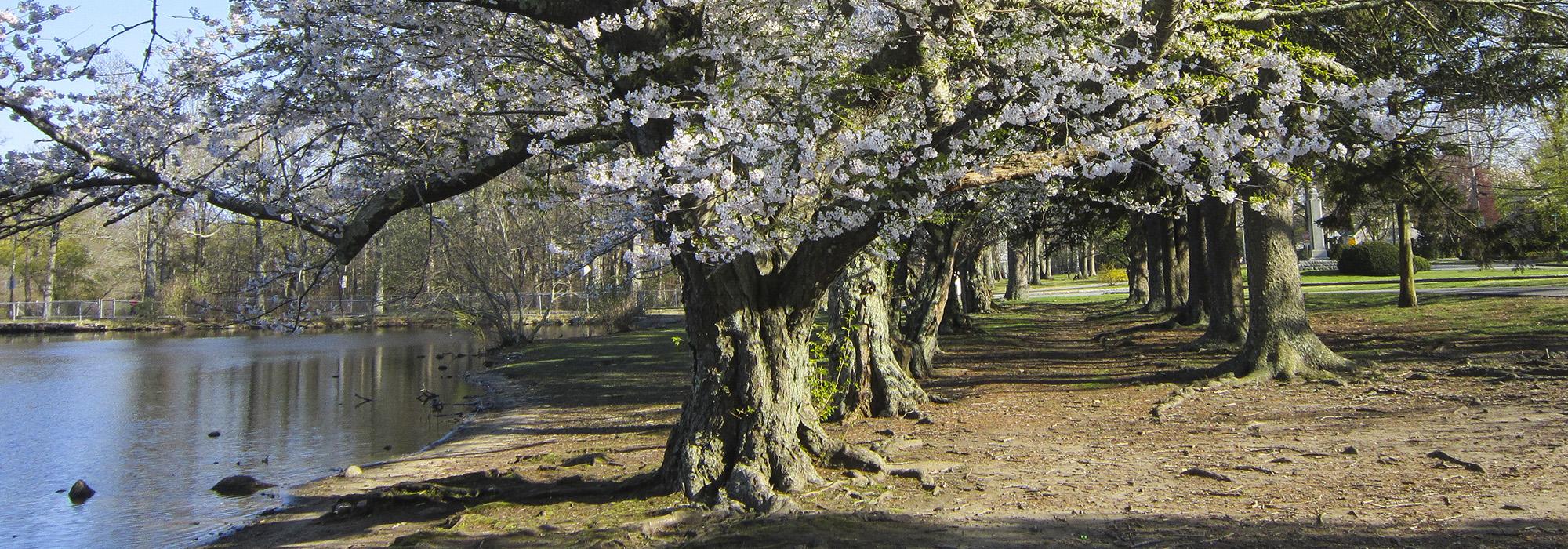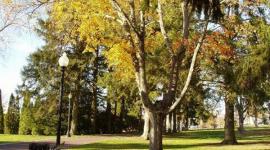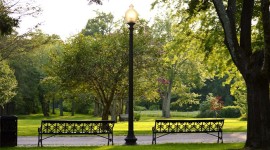Buttonwood Park’s Legacy Threatened by Master Plan
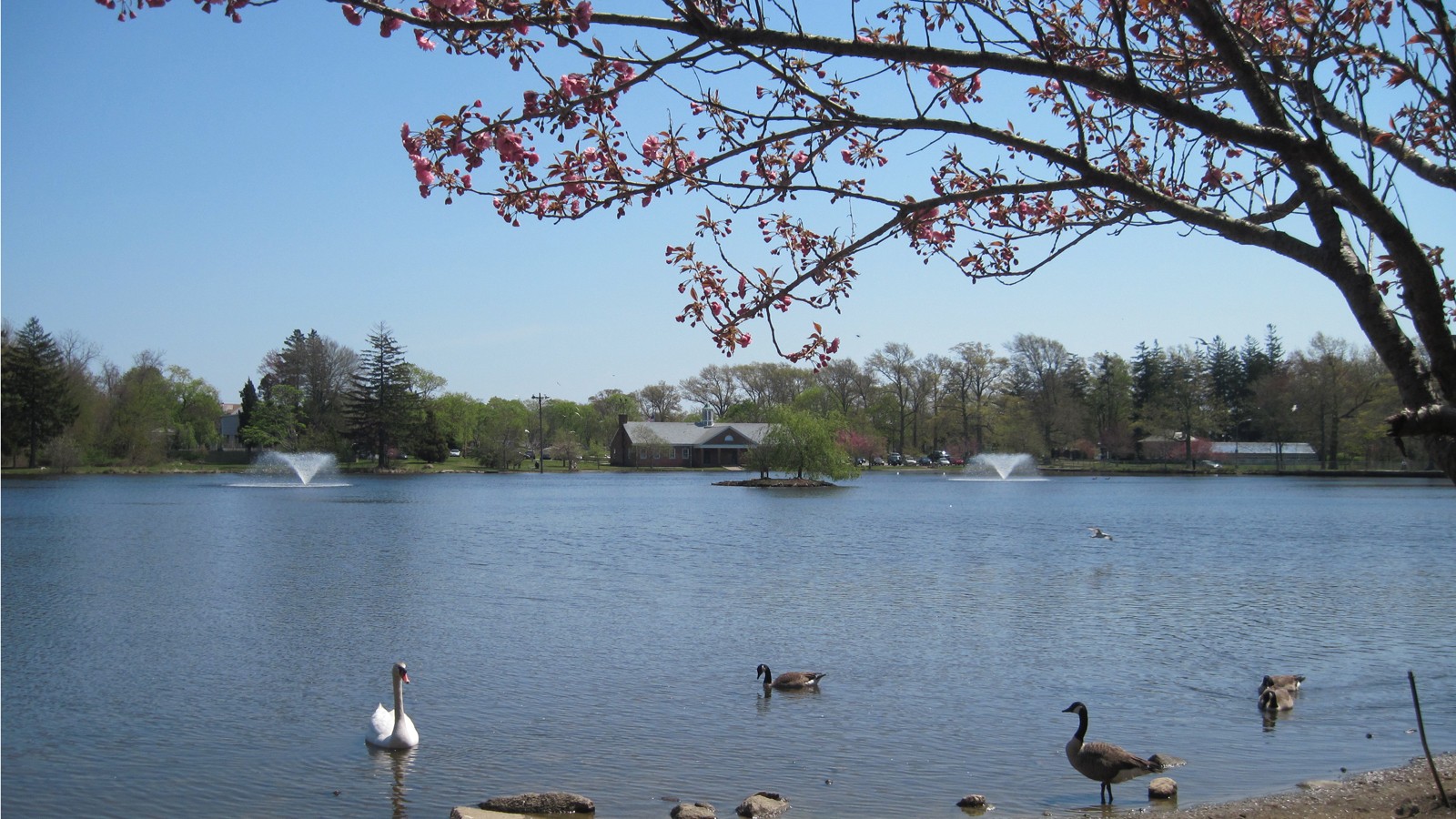
Located in the historic center of New Bedford, 97-acre Buttonwood Park is a central feature of the urban community. The National Register of Historic Places designated landscape continues to reflect the 19th century, Picturesque design and, in the last century, has also grown to include active recreational areas. Today, the original design is threatened by a proposed Master Plan for the park’s 10-acre zoo that would double its size within the park, encroaching on open spaces, wetlands, woodlands, and scenic vistas.
History
In 1892, as farmland and wooded areas were being enveloped by growing development, Park Commissioner and future Mayor of New Bedford, Stephen A. Brownell, advocated for the purchase of land to provide green spaces where city dwellers could “soothe and restore the spirit.” Charles Eliot, a partner in the Boston landscape architectural firm of Olmsted, Olmsted and Eliot, toured Buttonwood Park in 1894. Eliot’s findings were that the site’s natural features could be prudently altered or enhanced to create a scenic, rural retreat for the urban population.
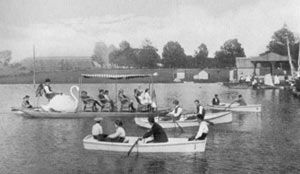
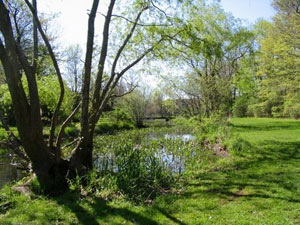
In 1895, Eliot prepared a preliminary plan for the park on behalf of Olmsted, Olmsted and Eliot. The principal design elements of the plan included enlarging the six-acre pond and creating an expansive meadow along the water’s edge with strategically placed vegetation so as to allow for “passages of scenery” and elongated views. Additionally, the plan provided for active play areas for lawn tennis, ball fields, and a children’s playground. Vehicular traffic was limited to a carriage road encircling the proposed site, while footpaths were strategically located in the interior. The plan called for a “dense mass of trees and shrubbery” along the perimeter of the park to act as a buffer against the noise and pollution of the city streets. Unfortunately, the Olmsted firm’s plan for Buttonwood Park was placed on file with the Park Commission by Mayor Brownell’s successor, and was never officially adopted.
Nevertheless, the park continued to thrive as a central, gathering spot—fulfilling the Olmsted vision of a democratic haven accessible to people from all walks of life. For many years, Buttonwood Pond, now expanded to 10 acres, provided recreational opportunities for boating, swimming, fishing, and ice skating. The park presently hosts concerts and festivals that are held throughout the summer. With the emergence of baseball as a popular sport, a baseball diamond was laid out in 1896. Tennis began in 1909, and there are now several tennis courts, ball fields, and basketball courts that serve the interests of the city’s diverse population. Jogging and walking along the periphery is a favorite activity, and an old bridle path is today a shaded walkway under a canopy of trees.
The playground, now fully accessible to the handicapped, includes a perennial sensory garden. The brick Warming House, a 1930s Public Works Project, serves the community as a Senior Center. As early as 1894, the park maintained a ‘menagerie,’ a small collection of native animals, which has evolved and is recognized today as one of the finest small zoos in the country.
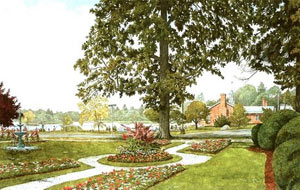
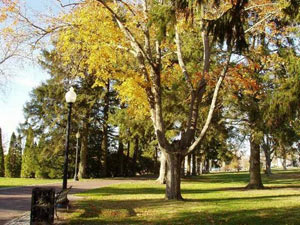
Although not in keeping with the Olmsted vision, numerous memorials are scattered throughout the park including the Barnard Monument (1914), the oldest, erected as a tribute to the fortitude of the city’s maritime and textile workers, and the most recent Holocaust Memorial (1998), an imposing stone and bronze sculpture honoring those “murdered but not forgotten.”
In 1988, “Reclaiming the Useable Past” (A Master Plan for Veteran’s Memorial Park and Zoo at Buttonwood Park) presented “design solutions to the problem of reclaiming the historic aspects of the park within its contemporary setting.” Among the plan’s many recommendations that have been implemented are the restoration of the Great Lawn, the construction of a pedestrian Concourse to link the park and the zoo, and the establishment of a ‘Friends’ organization to act as stewards of the park.
Through the efforts of the Friends of Buttonwood Park, over 250 additional trees have been planted throughout the park. The Arboretum boasts 14 specimen trees, and perimeter tree plantings continue in accordance with the original Olmsted design. Woodlands have been cleared of invasive species and reclaimed for a wetlands buffer garden and nature trails. Historic elements, such as period benches and lighting along the Concourse, also reflect the park’s heritage.
Threat
The initial phase of the zoo Master Plan proposes the use of over four acres of public parkland for an ‘Asia’ exhibit. The area is comprised of open grassland offering scenic vistas and opportunities for strolling, picnicking, or simply, quiet meditation. Park users are able to walk in a naturalistic setting along well-maintained grass pathways bordering a running brook, wetlands vegetation, and forested areas with under-story bushes and shrubs—the “gentle hollow” that Eliot referred to as “the loveliest of rural scenes.”
The Potting House (1921), adjacent to formal gardens, is in jeopardy of being enclosed behind 8-foot fencing and shrubbery that will encompass the entire perimeter of the zoo. ‘Future Options’ encloses another 4 acres of designated wetlands behind these barriers, while undetermined acreage will be lost to expanded parking facilities.
Get Involved
The Mayor has recommended the creation of a task force to meet in the coming weeks and review the proposed plan in order to make a recommendation to the Park Board. The public is encouraged to submit letters of support for preserving the historic integrity of Buttonwood Park to The Friends of Buttonwood Park at P.O. Box 2011, New Bedford, MA 02745 or via email at friends@buttonwoodpark.org.



